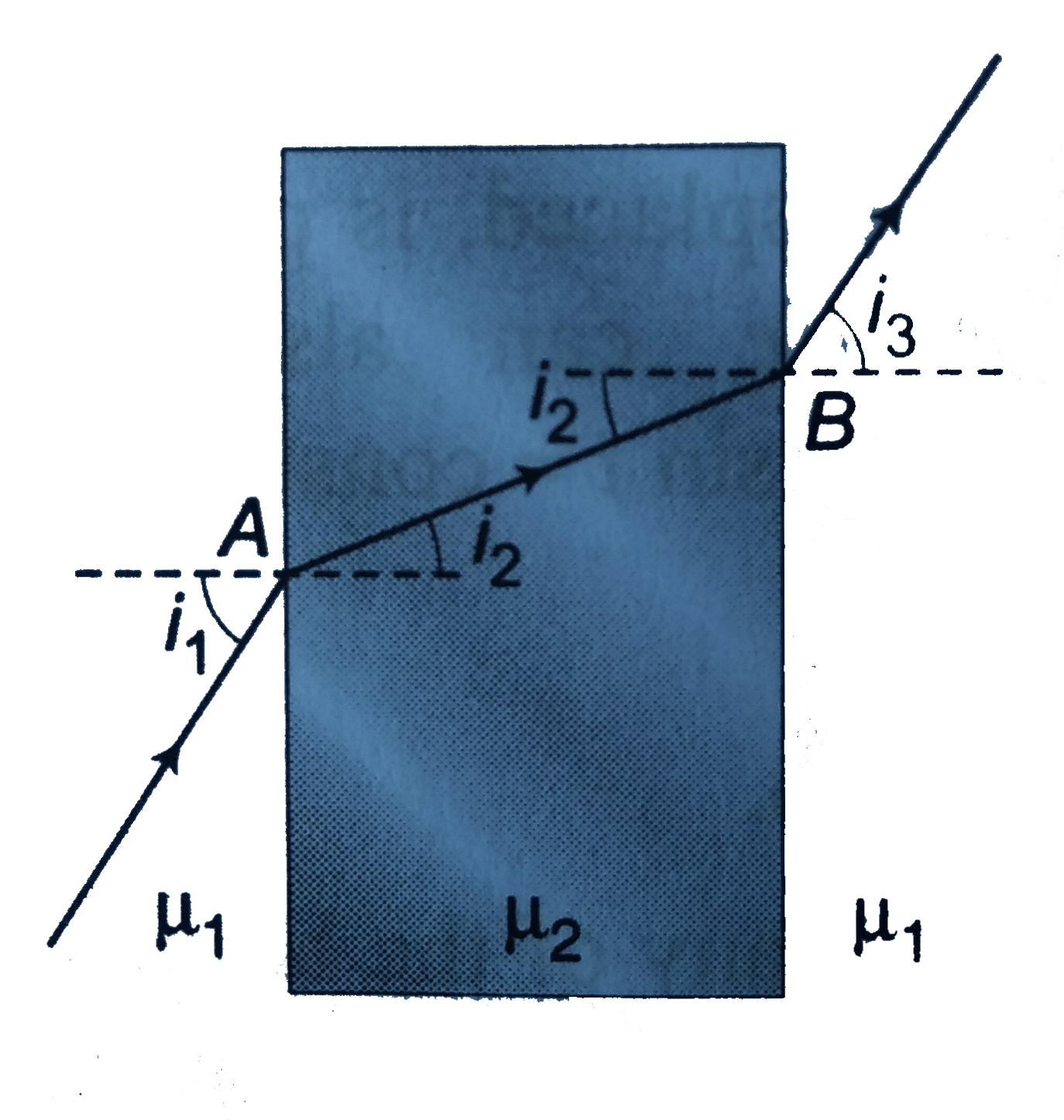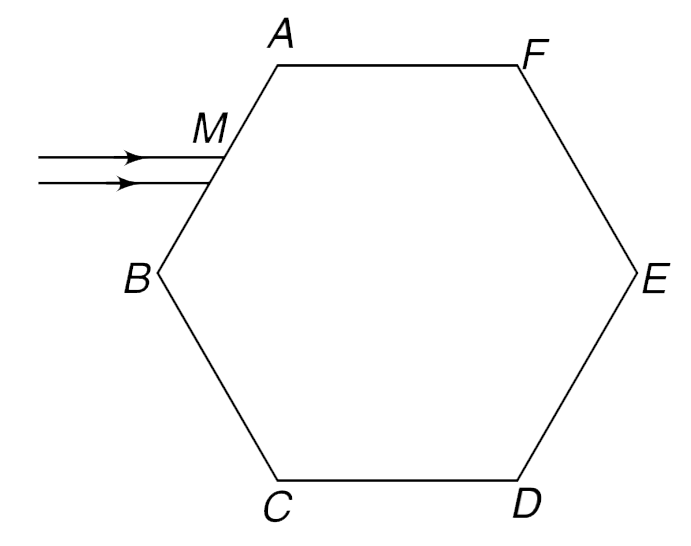A light beam, passes from medium 1 to medium 2. Show that the emerging beam is parallel to the incident beam.
The correct Answer is:A, C
Applying Snell's law at A,
μ1sini1=μ2sini2
or μ1μ2=sini2sini1……(i)
Similarly at B,μ2=sini2=μ1sini3
∴μ1μ2=sini2sini3…….(ii)
From Eqs. (i) and (ii) ,we have , i3=i1
i.e.the emergent ray is parallel to incident ray.

Topper's Solved these Questions
- BOOK - DC PANDEYCHAPTER - REFRACTION OF LIGHTEXERCISE - Example Type 101videos
REFRACTION OF LIGHT
- BOOK - DC PANDEYCHAPTER - REFRACTION OF LIGHTEXERCISE - Example Type 113videos
REFRACTION OF LIGHT
- BOOK - DC PANDEYCHAPTER - REFLECTION OF LIGHTEXERCISE - Subjective9videos
REFLECTION OF LIGHT
- BOOK - DC PANDEYCHAPTER - SEMICONDUCTORSEXERCISE - Subjective12videos
SEMICONDUCTORS
Similar Questions
A convex lens of focal length 20 cm and a concave lens of focal length 10 cm are placed 10 cm apart with their principal axes coinciding. A beam of light travelling parallel to the principal axis and having a beam diameter 5.0 mm, is incident on the combination. Show that the emergent beam is parallel to the incident one. Find the beam diameter of the emergent beam.
View SolutionA converging lens of focal length 10cm and a diverging lens of focal length 5cm are placed 5cm apart with their principle axes coinciding. A beam of light travelling parallel to the incident one. Find the beam diameter of the emergent beam is parallel to the incident one. Find the beam diamter of the emergent beam. Alos find out the ratio fo emergent and incident intensities.
View Solution
Knowledge Check
- Question 1 - Select One
When a light beam passes from a medium of one refractive index to another, its :
Afrequency changesBfrequency and wavelength changeCwavelength and velocity changeDvelocity and frequency change - Question 2 - Select One
When a light beam passes from a medium of one refractive index to another, its :
Afrequency changesBfrequency and wavelength changeCwavelength and velocity changeDvelocity and frequency change - Question 3 - Select One
A beam of light passes from medium 1 to medium 2 to medium 3 as shown figure. What may be concluded about the three indices of refraction, n1,n2,andn3 ?
 An3>n1>n2Bn1>n3>n2Cn2>n3>n1Dn2>n1>n3
An3>n1>n2Bn1>n3>n2Cn2>n3>n1Dn2>n1>n3
The cross section of a prism is a regular hexagon. A narrow beam of light strikes a face of the prism just below the midpoint (M) of the edge AB. The beam is parallel to the top and bottom faces of the prism. Final the minimum value of refractive index of the material of the prism for which the emergent beam will be parallel to the incident beam.
 View Solution
View SolutionBeam expander
Assume that a parallel beam is incident on two convex lens of focal length 20cm and 40cm. The beam has a diameter of 2cm. What should be the distance between them so that the final beam emerges parallel to the principal axis( Fig. 34-46) ?View SolutionAs the beam enters the medium, it will
View SolutionLinear polarized light is incident at Brewster angle on the surface of a medium . If the incident beam is polarized parallel to the plane of incidence then the parallel component of light is
View SolutionA proton beam is fired from west to east and an electron beam is fired parallel to it in the same direction. Force on the electron beam will be
View Solution

